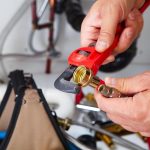There are many different options in providing heat treatments for different types of metals and alloys. Each offers different benefits and provides the characteristics of the finished part or component requirement by the Original Equipment Manufacturer (OEM).
The Basics of the Process
In atmosphere heat treating, a protective atmosphere is used to prevent chemical reactions that can occur in the heating process when completed in the natural air. While the presence of natural air, and specifically the oxygen in the air, surface chemical changes do not occur and the parts retain a bright finish without the need for an additional process.
It is important to note than atmosphere heat treating is the same as heat treating in a vacuum. Instead, the natural air is replaced with a specific controlled atmosphere. Vacuum processing can be highly effective, but it is also more costly, which makes it a less viable option for most OEMs.
Different Atmospheres Produce Different Results
It is possible to use nitrogen and argon as well as other types of mixtures and gases. For example, hardening is usually completed with nitrogen and argon, which is ideal for most steels and will prevent oxidation during the heat treating process.
For carburizing, there is often the need to add a combination of nitrogen and methanol combined with a hydrocarbon gas. This allows for the additional layer of carbon to the surface of the steel to create the much more durable surface layer.
For bright annealing, the atmosphere heat treating is typically completed using pure hydrogen as the gas. Even small amounts of contaminants can result in a lower quality look to the stainless steel after the heat treating is completed.
Brazing can also be done in controlled atmosphere furnaces. The specific mixture of gas used will be determined by the metal or alloy as well as the type of flux also used to prevent oxidation during the process.





